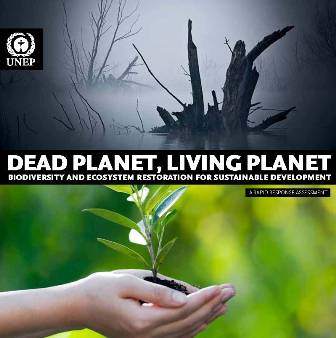UNEP book on Biodiversity & Ecosystem Restoration for Sustainable Development

UNEP publication released in conjunction with World Environment Day 2010.
interactive e-book
Edited by Christian Nellemann and Emily Corcoran and distributed as part of the UNEP World Environment Day on June 5, this report confirms that restoration is not only possible but can prove highly profitable in terms of public savings; returns and the broad objectives of overcoming poverty and achieving sustainability. It also provides important recommendations on how to avoid pitfalls and how to minimize risks to ensure successful restoration. The book is part of UNEP’s evolving work on the challenges but also the inordinate opportunities from a transition to a low carbon, resource efficient Green Economy.
We would like to acknowledge our clients Mariner Properties Development, Inc. and Gulfstream Natural Gas System, LLC for having their projects, Little Pine Island Regional Mitigation Bank and Lake Wales Forest Mitigation and Net Ecosystem Benefits respectively, chosen as part of the 36 world wide case studies included in the book.
The following is the preface to the UNEP publication Dead Planet, Living Planet: Biodiversity and Ecosystem Restoration for Sustainable Development [Christian Nelleman (Editor in chief) and Emily Corcoran](2010).
Biodiversity and ecosystems deliver crucial services to humankind – from food security to keeping our waters clean, buffering against extreme weather, providing medicines to recreation and adding to the foundation of human culture. Together these services have been estimated to be worth over 21–72 trillion USD every year – comparable to the World Gross National Income of 58 trillion USD in 2008.
(by Achim Steiner UN Under-Secretary General and UNEP Executive Director)
The loss of ecosystems and the biodiversity underpinning them is a challenge to us all. But a particular challenge for the world’s poor and thus for the attainment of the UN’s Millennium Development Goals.
Wetlands provide services of near USD 7 trillion every year. Forested wetlands treat more wastewater per unit of energy and have up to 22 fold higher cost-beneft ratios than traditional sand fltration in treatment plants. Many of the world’s key crops such as coffee, tea and mangoes are dependent on the pollination and pest control services of birds and insects. By some estimates projected loss of ecosystem services could lead to up to 25 % loss in the world’s food production by 2050 increasing the risks of hunger. The loss of mangroves, wetlands and forests increases vulnerability and is a contributory factor as to why as many as 270 million people annually are being affected by natural disasters. Ecosystems, such as sea-grasses; tidal marshes and tropical forests, are also important in removing greenhouse gases from the atmosphere: their steady decline may accelerate climate change and aggravate further countries and communities’ vulnerability to its impacts.
It is high time that governments systematically factored not only ecosystem management but also restoration into national and regional development plans.
This report is a contribution to the UN’s International Year of Biodiversity and is a complement to the UNEP-hosted Economics of Ecosystems and Biodiversity (TEEB) which is bringing visibility to the wealth of the world’s natural capital. It documents over 30 successful case studies referencing thousands of restoration projects ranging from deserts and rainforests to rivers and coasts. The report confrms that restoration is not only possible but can prove highly proftable in terms of public savings; returns and the broad objectives of overcoming poverty and achieving sustainability. It also provides important recommendations on how to avoid pitfalls and how to minimize risks to ensure successful restoration.
Dead planet, living planet: Biodiversity and ecosystem restoration for sustainable development is part of UNEP’s evolving work on the challenges but also the inordinate opportunities from a transition to a low carbon, resource effcient Green Economy.
The ability of six billion people, rising to over nine billion by 2050, to thrive let alone survive over the coming decades will in part depend on investments in renewable energies to effcient mobility choices such as high speed rail and bus rapid transport systems. But as this report makes clear, it will equally depend on maintaining; enhancing and investing in restoring ecological infrastructure and expanding rather than squandering the planet’s natural capital.
Copies of the book are available for purchase through UNEP